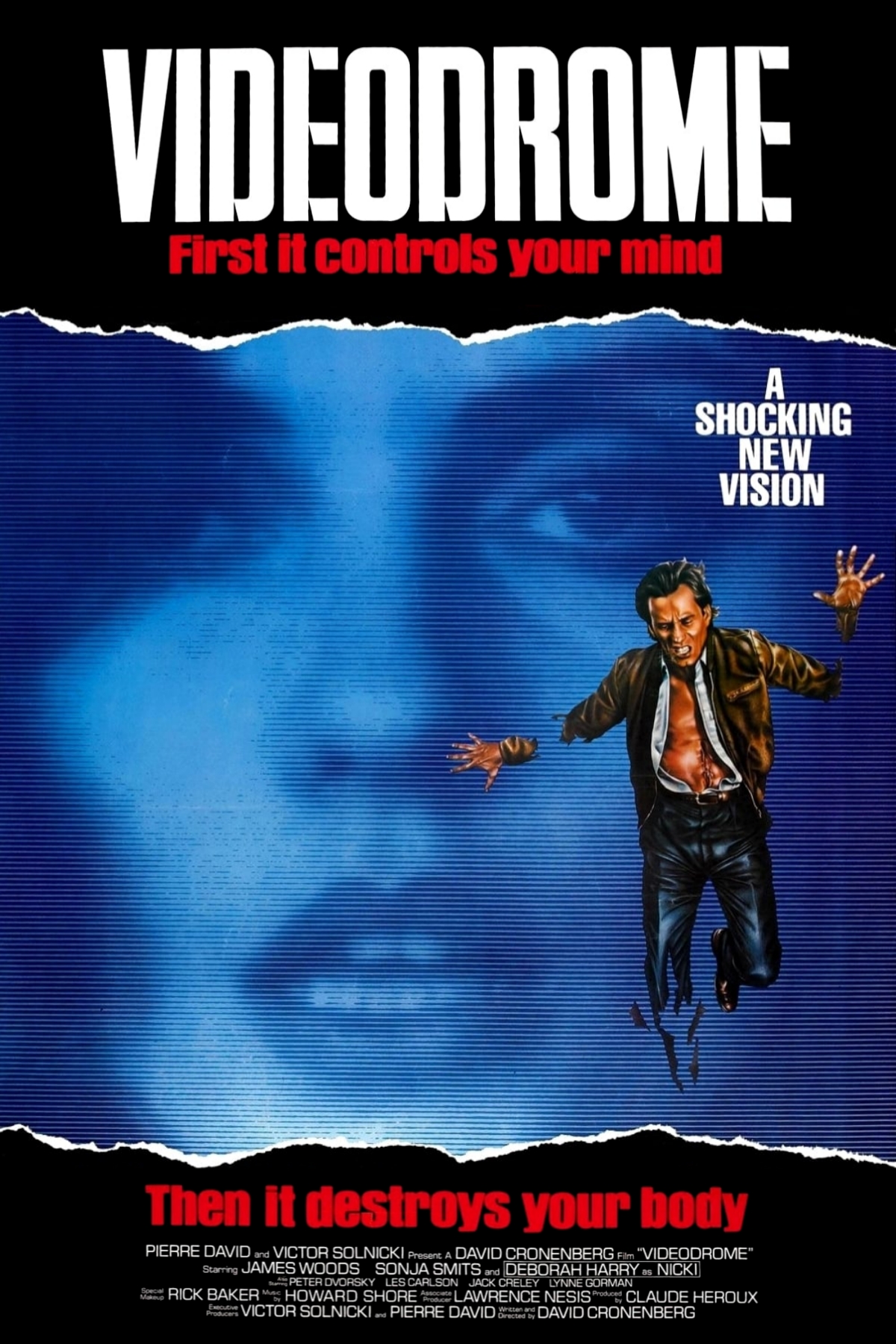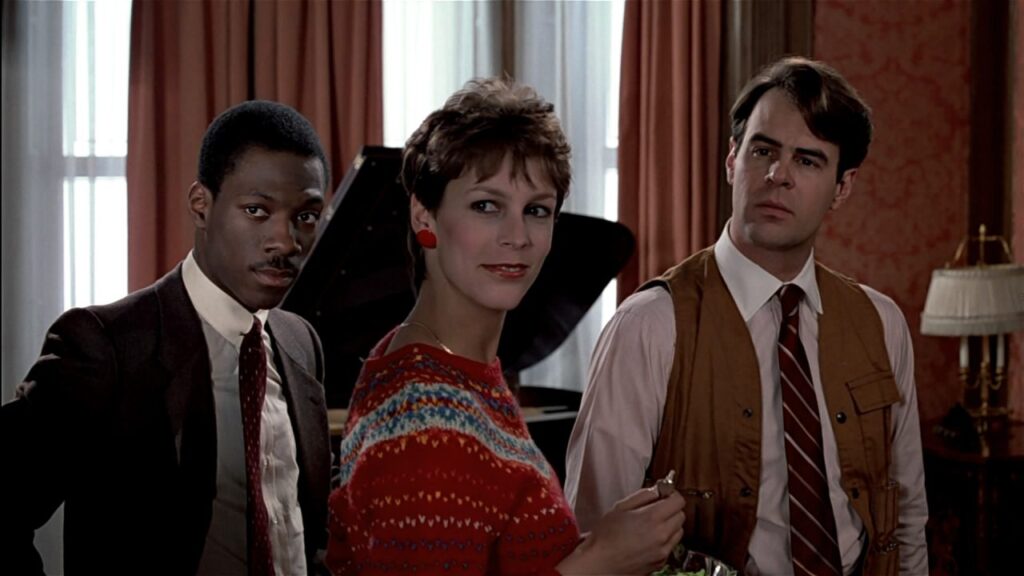“Videodrome” (1983): A Surreal Descent into the Frightening Fusion of Technology and Reality – Film Review

David Cronenberg’s 1983 film “Videodrome” is a seminal work in the body horror genre, presenting a disturbing yet thought-provoking exploration of the merging of human consciousness with the evolving world of technology. Starring James Woods and Deborah Harry, this film is a complex, visceral experience that dives into the themes of media consumption, physical transformation, and the blurring line between reality and illusion.
Narrative Intricacies: A Mind-Bending Exploration of Media’s Power
The film follows Max Renn (James Woods), the president of a small UHF television station, who stumbles upon a broadcast signal featuring the violent and sexually explicit “Videodrome.” Fascinated by its potential to attract a new audience, Max delves deeper, only to find himself drawn into a twisted conspiracy that manipulates reality through television. As Max experiences bizarre hallucinations and physical changes, “Videodrome” challenges the viewer’s perception of what is real and what is not.
The narrative of “Videodrome” is a labyrinthine journey that explores the impact of new media on the human psyche and body. Cronenberg crafts a story that is as much a philosophical inquiry as it is a horror film, addressing how media can control, consume, and ultimately redefine human existence.
Behind the Scenes: The Making of a Cult Classic
The production of “Videodrome” is marked by its groundbreaking practical effects and innovative use of video technology. Cronenberg, known for his penchant for body horror, worked closely with special effects artist Rick Baker to create the film’s memorable and grotesque effects. These effects, from the undulating television screens to the organic gun fusion with Max’s hand, were groundbreaking for their time and remain impressive by today’s standards.
The use of video technology, especially the sequences involving distorted video broadcasts, added another layer of surrealism to the film. These sequences were designed to be jarring and disorienting, reflecting the film’s themes of media manipulation and the distortion of reality.
Performances: Woods and Harry in Pivotal Roles
James Woods delivers a compelling performance as Max Renn, capturing the character’s transition from an opportunistic TV executive to a man losing his grip on reality. Woods’ portrayal of Max’s descent into madness is both convincing and unsettling.
Deborah Harry, as Nicki Brand, offers a performance that is both sensual and haunting. Her character’s fascination with the dark side of media and her eventual transformation are crucial to the film’s exploration of the seductive and dangerous nature of Videodrome.
Cinematography and Visual Style: Crafting a Technological Nightmare
Cronenberg’s collaboration with cinematographer Mark Irwin resulted in a visual style that perfectly complements the film’s themes. The use of lighting and color in “Videodrome” creates a mood that oscillates between the cold, mechanical world of technology and the warm, organic nature of the human body. This contrast is key to the film’s exploration of the intersection between humans and machines.
Music and Sound: Amplifying the Surreal Atmosphere
The score by Howard Shore is an integral part of “Videodrome’s” atmosphere. Shore’s use of synthesizers and electronic music adds to the film’s surreal and futuristic tone. The sound design, which blurs the line between the film’s diegetic and non-diegetic sounds, further immerses the viewer in the film’s hallucinatory world.
Themes: Media Consumption, Identity, and Reality
“Videodrome” delves into complex themes such as the impact of media consumption on the human condition, the malleability of identity, and the nature of reality itself. The film suggests that in a world increasingly dominated by media, the distinction between the real and the virtual becomes blurred, leading to a loss of individuality and agency.
Cultural Impact and Reception
Upon its release, “Videodrome” was met with mixed reviews, but over time, it has been recognized as a visionary piece that was ahead of its time. The film’s exploration of themes such as virtual reality and the physiological effects of technology consumption has become increasingly relevant in the digital age.
“Videodrome” stands as a landmark film in the science fiction and horror genres, offering a disturbing yet insightful look at the dark side of media and technology. Its combination of innovative practical effects, thought-provoking narrative, and visceral imagery makes it a cult classic that continues to resonate with audiences today. Cronenberg’s vision of a world where technology and the human body converge in disturbing ways is a powerful reminder of the potential dangers of unchecked media consumption and the loss of the distinction between reality and illusion.



